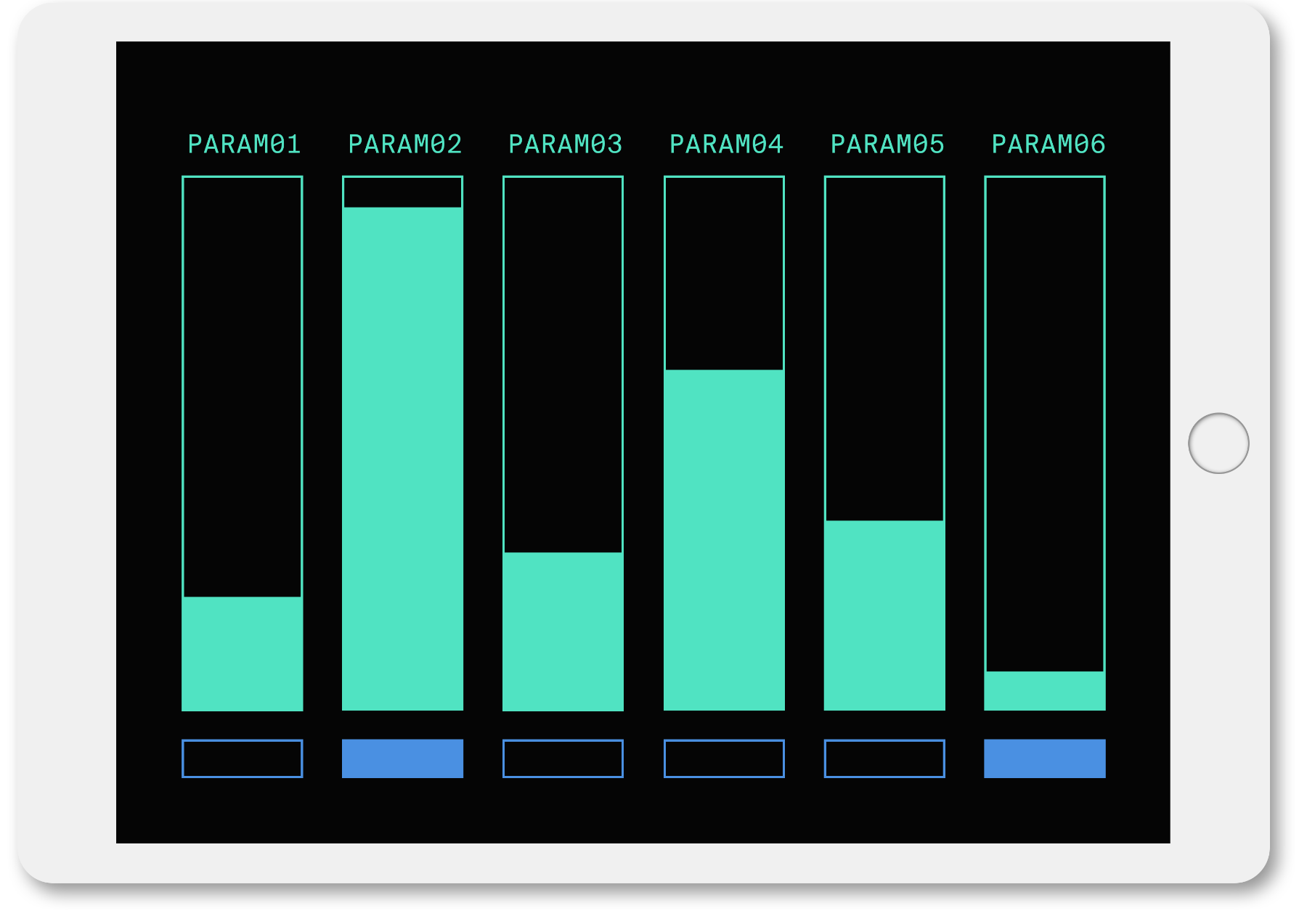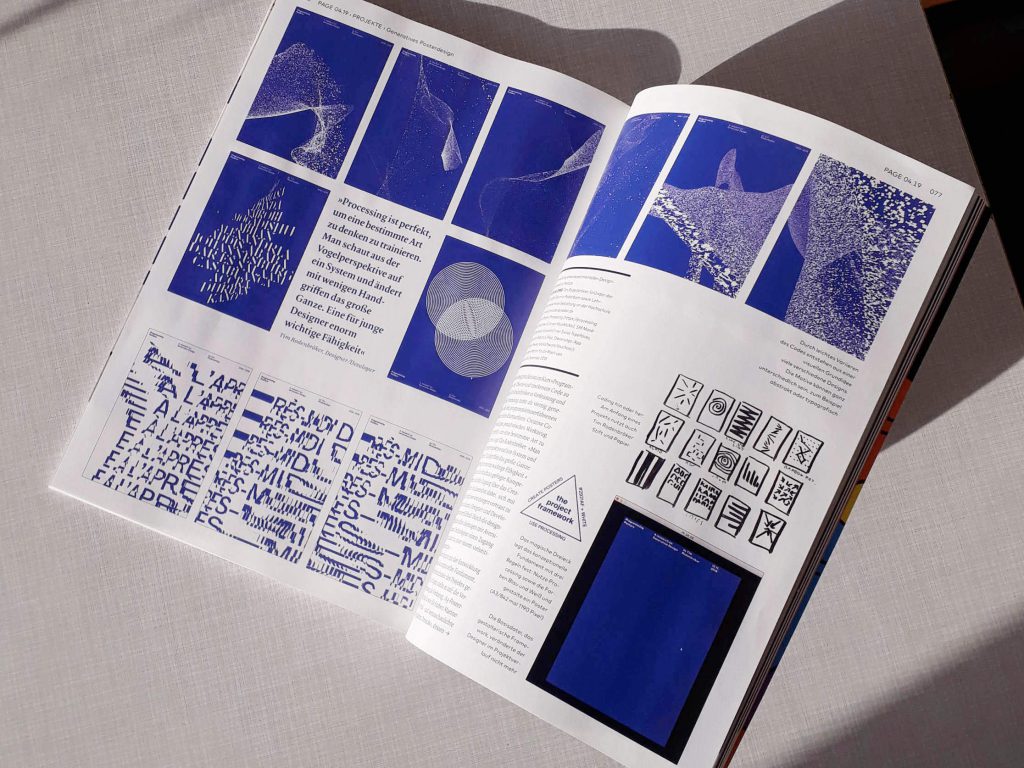Programming Posters
The printed poster, the major medium for visual communication in public space for centurys, experiences fundamental transformations. The „Poster 2.0“ is much more than a surface with type, colors and images on it: It is an interactive application, animated, audible, data driven and intermedial. It involves all senses and disciplines. And it melts together graphic design with cutting edge technologies.
The project-idea came up when i’ve prepared a creative coding-course for the faculty of Design at Rhine-Waal University. I’ve aimed to create a design-project-briefing that fits perfectly into the fields of interest of communication designers.

In the beginning of the conception i’ve faced the challenge, that the design-students didn’t know if its possible to create quality graphic-design with a programming-language and no foreknowledge anyway. I needed to proof that before the course began. The outcome of that research is what you see in this case-study.






The Magic Triangle
To ensure a high remarkability and focus, i’ve decided to restrict my students to work exclusively with two colors and a defined font-family. This ensured their maximum focus on the right spot: The creative possibilities of coding. To visualize the restrictions of the project, i usually make use of a creativity-technique called “The Magic Triangle”: Each border of the shape represents one rule or restriction. All 3 borders together build a frame around the creative space, which is literally the area where the ideas exist.

Tech
I’ve discovered Processing as the ideal tool for this project. Compared to other code-based methodologies, the simple application does not require any complicated build-tools. It fits perfectly into the needs of graphics designers and beginners through intuitive commands, a wide range of tutorials, a very good reference and a huge community.

In addition i’ve utilized TouchOSC, a simple application for any platform that sends floating-point-values to any Processing-application. This enabled me to control any parameter of the poster-applications.




Press




Related
Enjoying the content?
Since 2018, I have published 235 interviews, case studies, and tutorials, along with over 324 lessons in 21 online courses – and there's more to come! If you want to get full access or simply support my work and help keep this platform thriving, please consider supporting me on Patreon. Thank you very much!

Related

 Building Tools with p5.js (Playlist)
Building Tools with p5.js (Playlist)
Click here to login or connect!To view this content, you must be a member of Tim's Patreon at €7 or […]
 DEMO 2025 – My Submissions
DEMO 2025 – My Submissions
Limitations have always been playing a major role in my creative work; I was only able to develop my best […]
 The 128kb Framework and its Aesthetic Characteristics
The 128kb Framework and its Aesthetic Characteristics
One day in early 2024 I started to experiment with a new idea. I wrote down a set of rules […]
 My new writing project “downgrade” is live
My new writing project “downgrade” is live
Hey folks, I hope you are doing great! You may have already read one or two of my essays that […]
 Join the 128kb challenge!
Join the 128kb challenge!
Instagram, Twitter, TikTok… All the main platforms that technically have the required features to connect emerging communies for Creative Coding […]
 A custom Mockup Tool, built with Processing (updated)
A custom Mockup Tool, built with Processing (updated)
For my students at Elisava, I have created a new version of my mockup-tool. You need two different files for […]
 Preview: When Computers create Collages
Preview: When Computers create Collages
2023-12-01 Today I want to share with you a first prototype that will be the basis for a new course […]


